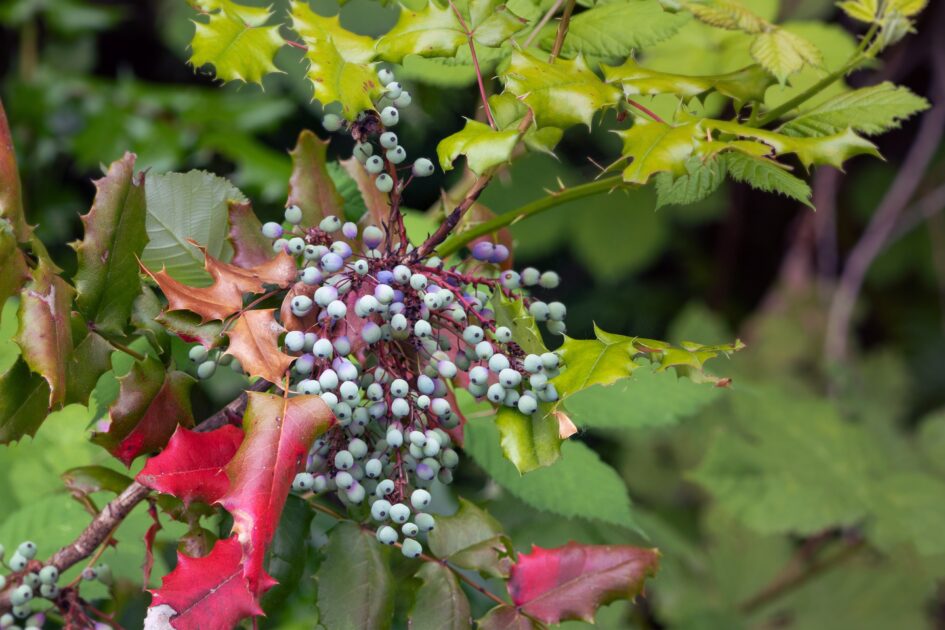The other day in my french Immersion class we had an indigenous speaker come in who works at a school in Victoria to speak with us about the plants around the area. She talked about how we can incorporate learning about indigenous perspectives in our classrooms and one plant that we talked about was the Oregon Grape. In the spring and summer, these plants have shiny, dark green leaves that closely ressemble Holly leaves. However, unlike Holly leaves, the Oregon Grape leaves are more flexible. Also, once it becomes colder, the leaves sometimes turn colours such as red, burnt orange and brown.
Along the coast, these plants blossom as early as late February and continue until April. The flowers appear in bright yellow clusters. In the late spring to early summer these flowers are replaced by clusters of grape-like blue berries. Even though these berries are edible, they are very sour and contain lots of large seeds.
Indigenous groups along the coast used the Oregon grape as a food source. It was commonly used to make jam, once there was lots of sugar added and the bitter seeds were removed. This plant was also used as an antidote to shellfish poisoning. Another part of the plant that is highly valued is the Oregon grape roots. The roots have medicinal uses and they can also be boiled to make a bright yellow dye that was used for baskets.

October 13, 2023 at 2:51 pm
I find the indigenous uses of these plants fascinating. Have you ever tried foraging these plants and attempting to use them in these ways? It would be fun to try making Oregon grape jam. I wonder what it tastes like.